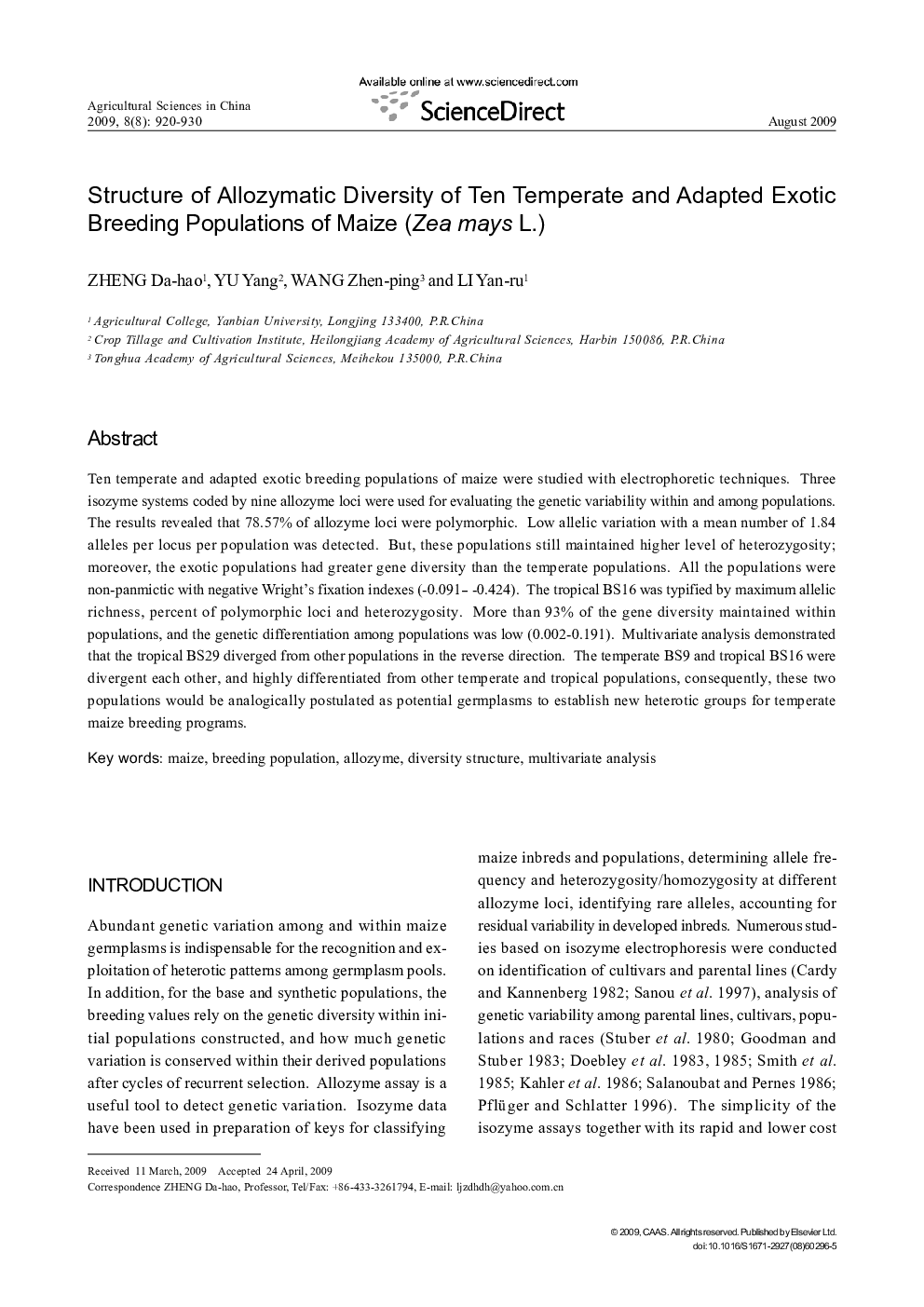| Article ID | Journal | Published Year | Pages | File Type |
|---|---|---|---|---|
| 4490327 | Agricultural Sciences in China | 2009 | 11 Pages |
Ten temperate and adapted exotic breeding populations of maize were studied with electrophoretic techniques. Three isozyme systems coded by nine allozyme loci were used for evaluating the genetic variability within and among populations. The results revealed that 78.57% of allozyme loci were polymorphic. Low allelic variation with a mean number of 1.84 alleles per locus per population was detected. But, these populations still maintained higher level of heterozygosity; moreover, the exotic populations had greater gene diversity than the temperate populations. All the populations were non-panmictic with negative Wright's fixation indexes (−0.091–−0.424). The tropical BS16 was typified by maximum allelic richness, percent of polymorphic loci and heterozygosity. More than 93% of the gene diversity maintained within populations, and the genetic differentiation among populations was low (0.002–0.191). Multivariate analysis demonstrated that the tropical BS29 diverged from other populations in the reverse direction. The temperate BS9 and tropical BS16 were divergent each other, and highly differentiated from other temperate and tropical populations, consequently, these two populations would be analogically postulated as potential germplasms to establish new heterotic groups for temperate maize breeding programs.
